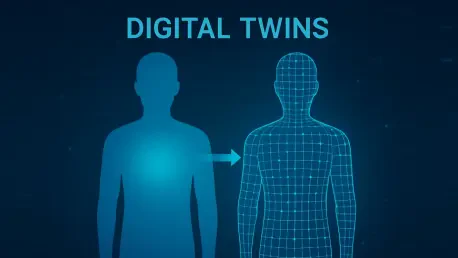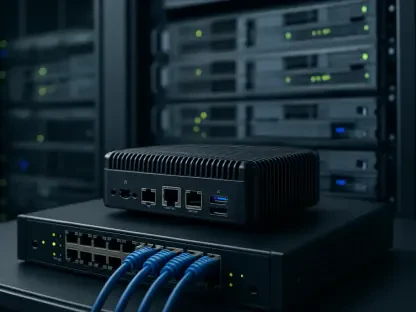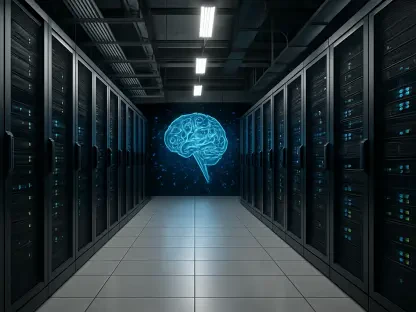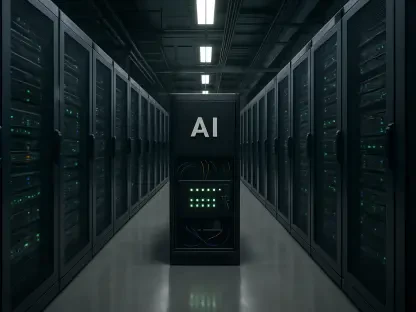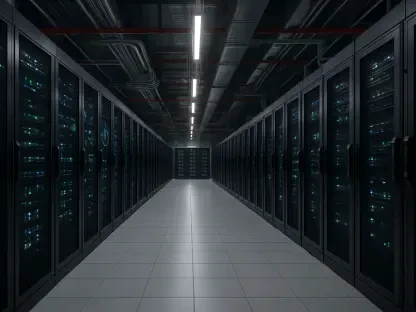The evolution of digital technology is reshaping various sectors, with Digital Twins and Generative AI (GenAI) at the forefront of this transformation. Digital Twins, which are virtual counterparts of physical systems and processes, offer a dynamic solution for various business needs by simulating real-world operations digitally. They enable organizations to experiment and innovate without disrupting their existing frameworks. The integration of GenAI with Digital Twins further augments their capacity by facilitating advanced learning and predictive analytics. This synergy is particularly significant in the fields of network management and cybersecurity, where evolving threats necessitate proactive measures. As organizations become more reliant on digital infrastructures, safeguarding these assets becomes paramount. Digital Twins, enhanced by GenAI, offer a robust framework for managing the complexities of network security, ensuring the integrity and reliability of digital interactions.
The Power of Digital Twins in Network Management
Digital Twin technology is rapidly advancing as industries recognize its potential to revolutionize network management. These virtual models allow businesses to map and emulate real-world environments, providing invaluable insights into the functioning of their networks. By deploying Digital Twins, organizations can simulate network configurations and test new security measures without risking disruptions to their live systems. Such environments provide an unprecedented platform for network administrators to preemptively identify vulnerabilities and optimize performance. The ability to conduct real-time simulations and analyses significantly reduces the uncertainty traditionally associated with implementing new technologies or configurations. As a result, organizations can bolster their network infrastructure’s efficiency and resilience, enhancing both security and operational capacity.
The applications of Digital Twins extend far beyond mere simulations. They offer a comprehensive framework for managing dynamic network requirements, supporting continuous optimization and management efforts. Through real-time monitoring and data analysis, these models help organizations adapt to environmental changes and operational demands swiftly. For instance, in high-stakes industries such as finance and healthcare, ensuring network uptime and security is critical. Digital Twins enable these organizations to anticipate and mitigate potential threats, ensuring reliable and secure data flows. Moreover, their capacity to support decentralized network management strategies allows multiple teams to collaborate effectively, yielding insights that drive strategic decision-making.
Enhancing Cybersecurity with Proactive Measures
Digital Twins play a pivotal role in fortifying cybersecurity by offering comprehensive testing environments that identify and address potential vulnerabilities. Cybersecurity teams leverage these environments to simulate various attack scenarios, understanding potential breaches and their repercussions. This enables them to devise countermeasures that mitigate risks before they materialize. Additionally, Digital Twins provide an invaluable platform for testing the efficacy of security policies and ensuring compliance with regulatory standards without affecting operational systems. By offering a risk-free arena for experimentation, organizations can innovate in their cybersecurity strategies confidently.
The strategic advantage of integrating Digital Twins with cybersecurity efforts lies in their capability for real-time analysis and predictive modeling. Organizations can anticipate and thwart potential threats by analyzing historical and current data, thereby maintaining robust protective measures. The use of Digital Twins in simulating cyber threats greatly enhances an organization’s ability to respond rapidly to incidents. Furthermore, the modeling tools provide insights into which vulnerabilities are most likely to be exploited, allowing targeted interventions. By understanding pathways of potential exploits and strengthening defenses accordingly, organizations maintain the integrity of their networks and protect sensitive information effectively.
Generative AI: Elevating Digital Twin Capabilities
Integrating Generative AI with Digital Twin technology unleashes new possibilities in network management and cybersecurity. GenAI equips these virtual replicas with advanced learning capabilities, improving their adaptability and sophistication. This allows Digital Twins not only to simulate current scenarios but also to predict future developments, offering foresight into potential challenges. These predictive capabilities empower organizations to plan and implement solutions proactively. By utilizing GenAI, businesses streamline routine network functions, thereby allowing their expert teams to focus on more complex challenges. Furthermore, the democratization of technological tools through GenAI enables a wider range of stakeholders within the organization to interact with these advanced models, fostering innovation through diverse perspectives.
The application of GenAI within Digital Twin frameworks significantly reduces the burden of routine tasks, allowing network and security teams to prioritize critical issues. GenAI facilitates the automation of repetitive processes, enhancing operational efficiency and reducing the likelihood of human errors in network management. It also helps address the skills gap within the cybersecurity industry, enabling less specialized staff to engage meaningfully with complex systems. As a result, organizations can maximize their manpower and achieve higher standards of security compliance and network performance. By making sophisticated technologies more accessible and user-friendly, GenAI drives significant improvements in the management of digital infrastructures.
Real-World Benefits and Case Study Applications
The implementation of Digital Twins and GenAI into network management and cybersecurity practices is yielding tangible benefits across various industries. Retail, healthcare, and financial sectors, in particular, are witnessing remarkable improvements in their operational efficiencies and security postures. These technologies enable businesses to anticipate changes, optimize resource allocation, and maintain rigorous security standards, thereby fostering innovation without compromising safety. As organizations integrate these sophisticated tools into their operations, they achieve a level of responsiveness and agility previously unattainable. For instance, retail chains leverage Digital Twins to simulate customer traffic patterns and supply chain dynamics, optimizing their operations while maintaining security protocols. Healthcare providers use these virtual models to manage sensitive data exchanges, enhancing patient privacy and compliance with regulatory frameworks.
Financial institutions have also adopted these advanced technologies to reinforce their security measures against potential threats. Through Digital Twins, banks and financial firms simulate various scenarios, preparing their systems for unexpected events and ensuring continuity of operations. By predicting and managing technology-driven disruptions effectively, these institutions maintain the trust of their clients and stakeholders. The adaptations across industries suggest a paradigm shift in how organizations view and treat cybersecurity. The advanced analytical and predictive capabilities of Digital Twins and GenAI are central to this shift, enabling a proactive approach to securing digital assets in an increasingly complex technological landscape.
Future Prospects and Strategic Implications
Digital Twin technology is gaining momentum as industries see its potential to transform network management. These virtual replicas help businesses simulate real-world settings, offering crucial insights into the operations of their networks. Leveraging Digital Twins, organizations can test network setups and new security protocols without affecting live systems. This innovative approach allows network managers to identify weaknesses and enhance performance before any real-world application. The capacity for real-time simulations and analyses greatly minimizes the uncertainty typically tied to introducing new technologies or configurations. Consequently, businesses can enhance the efficiency and robustness of their network infrastructure, boosting both security and operational capabilities.
Beyond simulations, Digital Twins provide a robust framework for managing evolving network requirements. They facilitate ongoing optimization and management by using real-time monitoring and data analysis. For companies in critical sectors like finance and healthcare, maintaining network availability and security is vital. Digital Twins allow these businesses to foresee and mitigate threats, ensuring secure data transfer. Additionally, their ability to support decentralized network strategies promotes effective team collaboration, offering insights that inform critical decisions.
